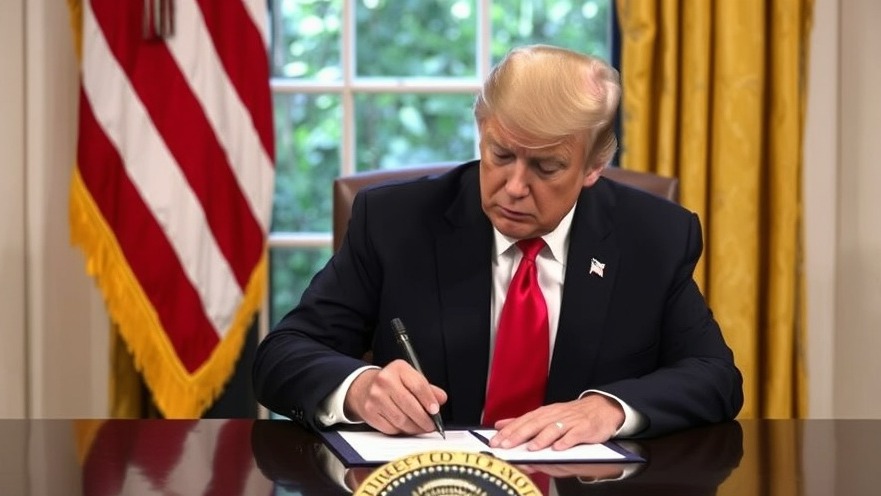
Understanding the Executive Order on Drug Pricing
On May 12, 2025, President Donald J. Trump signed a significant Executive Order that takes a bold step towards addressing one of the most pressing issues in American healthcare: exorbitant drug prices. The Executive Order introduces a Most-Favored-Nation (MFN) pricing model, aiming to align U.S. prescription drug prices with those in comparable developed nations. With U.S. patients often paying three times more than their international peers, this rule promises to reshape the landscape of drug affordability and accessibility.
Why Drug Pricing in America is a Crisis
The scenario depicted in the Executive Order underscores a long-standing issue where American consumers are not just contributors in global pharmaceutical markets but are, in fact, subsidizing foreign profits. Reports indicate that despite the U.S. encompassing less than five percent of the world's population, it accounts for an eye-watering 75% of global pharmaceutical profits. This disparity in pricing leads to questions about fairness and equity within the healthcare system, emphasizing the need for reforms that ensure accessibility for all.
The MFN Pricing Model Explained
President Trump’s MFN pricing model is set to enact immediate changes in how Americans purchase their medications. Key directives of the Executive Order include allowing the Secretary of Health and Human Services to establish a mechanism for patients to directly purchase medicines from manufacturers who commit to providing prices in line with international standards. This approach eliminates intermediaries that often inflate costs, providing patients more straightforward access to lower prices.
Potential Challenges and Opposition
While the Executive Order has been hailed as a significant move towards justice in drug pricing, it also faces opposition from various sectors, including pharmaceutical companies concerned about profit margins and market dynamics. Critics argue that the stringent pricing mechanisms could stifle innovation and investment in new drug development. Understanding these counterarguments is essential for practitioners who must navigate the complexities of this new landscape.
Practical Implications for Health Practitioners
For concierge health practitioners, this Executive Order represents a pivotal moment in how you may approach patient care. Being informed about potential changes in drug pricing can not only enhance your practice's reputation but also foster loyalty among patients who appreciate transparency and access to affordable care. By discussing drug prices openly with patients, you can build stronger relationships and trust in your practice.
Future Trends in Drug Pricing
Looking forward, the implications of this Executive Order may broaden, leading to further regulatory changes in the pharmaceutical landscape. Practitioners should stay informed about potential new health technologies and policies aimed at reducing medication costs and enhancing patient care. Engaging with industry developments can position your practice favorably in a rapidly evolving healthcare environment.
Conclusion and Call to Action
As you navigate these changes, consider how the new policies might affect your practice and your patients' medication access. By proactively addressing drug pricing with transparency and innovation within your practice, you not only elevate your standing in the community but also contribute to a broader culture of healthcare reform. Consider discussing these changes at your next patient meeting and explore solutions that help simplify access to affordable medications.
 Add Row
Add Row  Add
Add 






Write A Comment